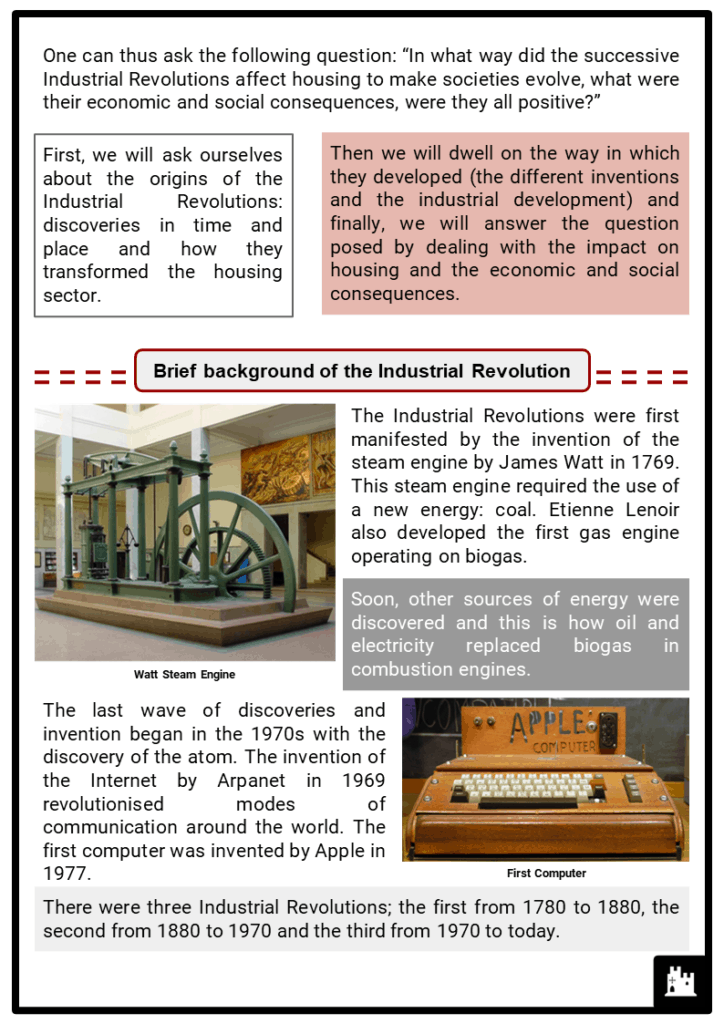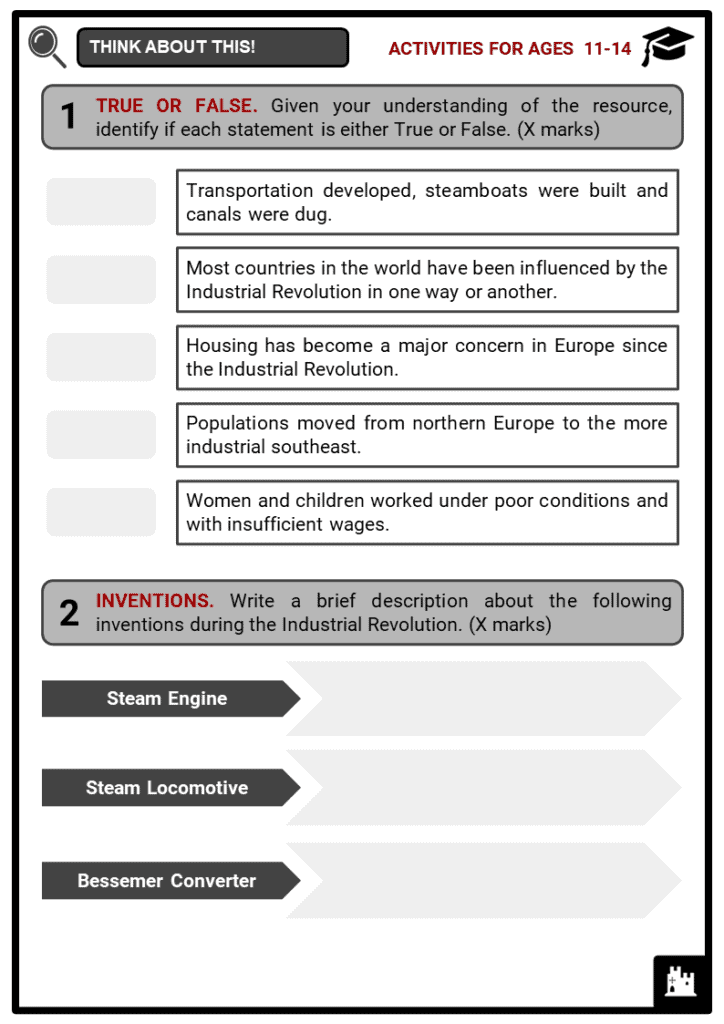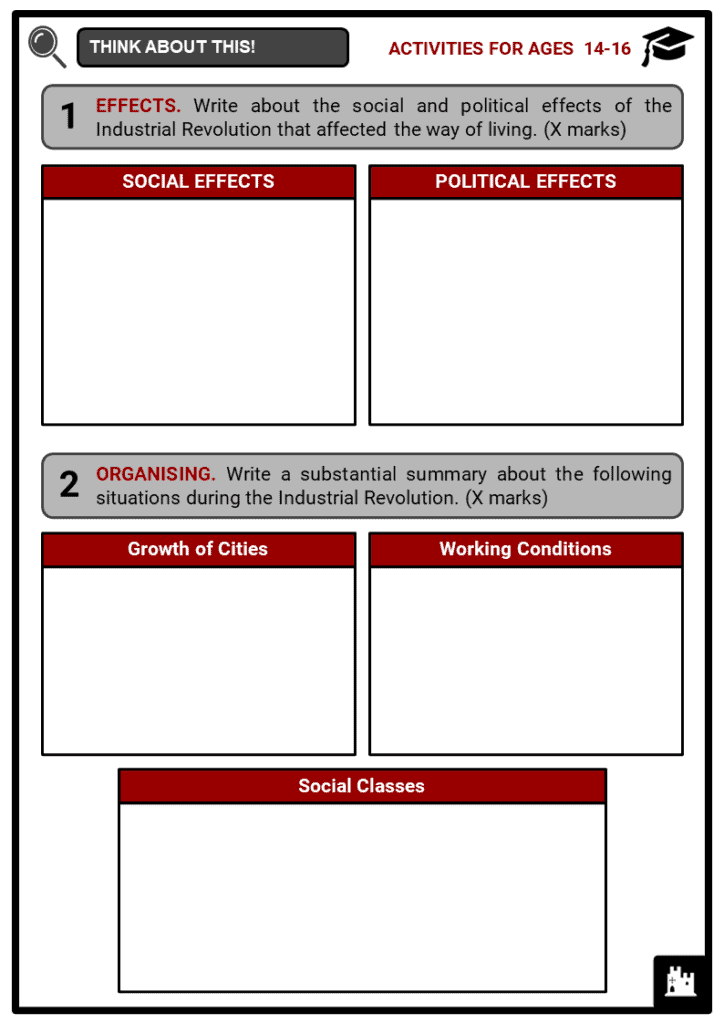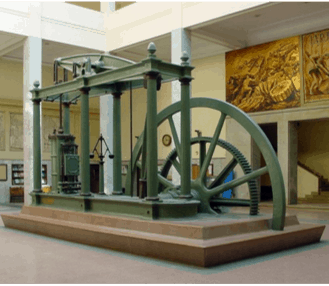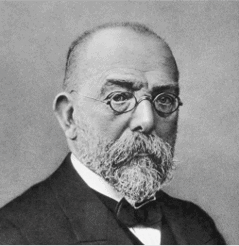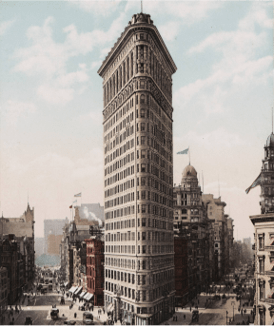Download Industrial Revolution Housing Worksheets
Do you want to save dozens of hours in time? Get your evenings and weekends back? Be able to teach Industrial Revolution Housing to your students?
Our worksheet bundle includes a fact file and printable worksheets and student activities. Perfect for both the classroom and homeschooling!
Table of Contents
Add a header to begin generating the table of contents
Summary
- Brief background of the Industrial Revolution
- Design or physical condition of housing during the Industrial Revolution
- Political, social, and cultural transformations of Industrial Revolution housing
Key Facts And Information
Let’s know more about Housing during the Industrial Revolution
- The expression “Industrial Revolution” created by Adolphe Blanqui refers to the changes that modified the socio-economic structures of Europe and the United States as early as 1780.
- Important discoveries revolutionised the nations at that time, spawned transformations at all levels of society and created real progress in many areas.
- One can thus ask the following question: “In what way did the successive Industrial Revolutions affect housing to make societies evolve, what were their economic and social consequences, were they all positive?”
- First, we will ask ourselves about the origins of the Industrial Revolutions: discoveries in time and place and how they transformed the housing sector.
- Then we will dwell on the way in which they developed (the different inventions and the industrial development) and finally, we will answer the question posed by dealing with the impact on housing and the economic and social consequences.
Brief background of the Industrial Revolution
- The Industrial Revolutions were first manifested by the invention of the steam engine by James Watt in 1769. This steam engine required the use of a new energy: coal. Etienne Lenoir also developed the first gas engine operating on biogas.
- Soon, other sources of energy were discovered and this is how oil and electricity replaced biogas in combustion engines.
- The last wave of discoveries and invention began in the 1970s with the discovery of the atom. The invention of the Internet by Arpanet in 1969 revolutionised modes of communication around the world. The first computer was invented by Apple in 1977.
- There were three Industrial Revolutions; the first from 1780 to 1880, the second from 1880 to 1970 and the third from 1970 to today.
- England had a lot of coal deposits, great technological advancement, and an available workforce and was therefore the first country to become industrialised.
- France and Belgium underwent a slow evolution until 1830.
- The United States, meanwhile, was not slow to follow the English model.
- Germany did not start its industrialisation until around 1840 or 1845.
- Japan began to industrialise in 1854.
- As a result, in 1914, before the First World War, except for the United States and Japan, all the industrialised countries were European.
- The invention of the steam engine proved to be one of the most important inventions in the Industrial Revolution. The steam engine led to the manufacture of the steam locomotive.
- The rise of the locomotive made it possible to build several railroads in the world. Thus, between 1850 and 1914, 35,000 km of railways grew to around 1,000,000 km.
- Other inventions were born, the Bessemer Converter in 1856, hydroelectric dams (the first of which was built in France in 1869), the telephone created by Bell in the United States in 1876 (which made it easy to communicate worldwide), as well as the computer, which appeared a century later (1977).
- Industrialisation is linked to several sectors and the successive Industrial Revolutions had a significant impact on industrial development and completely transformed the global economic landscape over time. In fact, the mining industries (mainly iron and coal), began to grow in the late eighteenth century.
- Most countries in the world have been influenced by the Industrial Revolution in one way or another. The industrial cities of Britain experienced growth during the revolution.
- People moved from the countryside to the cities, in search of work. After finding a job, their second priority was to find a place to live. Social class defined the specific conditions and places in which people lived.
- The wealthy had their own neighbourhoods in every European city and the proletarians (the poorest class) lived in ghettos. The housing conditions of the poor were deplorable compared to those of the middle class. Many people lived in one room that was unsafe. Anyone could enter their house.
- Due to the fact that there was no public transport, the workers had to live near their work. Crafters and mechanics had the best standards of living, leaving other workers to live in overcrowded conditions.
- The Industrial Revolution – its origins, evolution, growth, and ultimate outcomes – is still a subject of vast historical debate.
- What the Industrial Revolution did was nothing less than cause a structural change in the economic organisation of English (and European) society. In other words, England and the United States experienced the transition from a traditional agricultural society to one of an industrial economy based on capitalist methods.
- The result of these developments was a period of high productivity and low food prices. This meant that the typical English family did not have to spend almost everything they had on buying food, and could now buy manufactured goods.
- Thus, the Industrial Revolution brought the advent of department stores that sold many different items. Transportation also improved. Many canals were dug and steamboats built.
- Although changes and developments in the industry were notable, the speed at which they occurred led to consequences with the labour force. So, women and children worked under very poor conditions and for insufficient wages
- The nineteenth century was also the century of economic liberalism. To increase the productivity of their employees, some bosses, including Catholic and Protestant patrons, built houses for their workers – because a worker who sleeps badly is less efficient. This was the birth of workers’ cities.
Design or physical condition of housing
- The issue of housing became a political and social concern across Europe with the Industrial Revolution in the nineteenth century, resulting in some major upheavals.
- In the first half of the 19th century, the rural and urban poor had a lot in common. Some of their similarities included: poor sanitation, overcrowded houses, low wages, poor diet, insecure employment, and the effects of sickness and old age.
- A census in 1851 shows that the urban population was larger than that of rural areas. Factories and industries in towns provided a wider range of jobs. However, unskilled and casual workers continued to struggle with low wages, fear of accidents and irregular income.
- Since there were a lot of people who were willing to work, employers were able to set the wages as low as they wanted, because people were willing to work as long as they were paid.
- Poor Victorian families lived in very small houses that only had a few rooms on each floor. The poorest ones had the worst conditions. Some houses were homes to 2 to 4 families who would share toilets and water - which they could get from a well or a pump.
- Due to the spike in population, the houses were built in a rush. Most of them were constructed quickly in terraced rows.
- Some of the houses were built with a small yard and an outside toilet was placed at the rear. Other houses were back-to-back with communal toilets.
- The lower classes were overcrowded and lived in poor housing conditions, and some lived in the cellars. There was said to be one house in which 17 people from different families lived in an area of 5 by 4 metres.
Political, social, and cultural transformations
- There was a mass rural exodus that brought new populations to the cities. Many cities were still based on a medieval design, that was no longer suitable in terms of area and circulation.
- Where the layout of medieval cities responded to a need to protect their inhabitants from an external enemy, the city of the Industrial Revolution needed lots of entrances and exits.
- The cities were therefore far from prepared for this influx of people from the countryside, and this is where the word “slum” first appears. In saturated city centres it was not uncommon to see cellars or stairwells furnished, or even benches rented for the night.
- High mortality was closely linked to poor housing conditions.
- The countries that experienced the Industrial Revolution also all underwent demographic changes, the most important of which was demographic transition. Demographic transition refers to the phenomena in which a significant event, the industrial revolution, caused a shift from high birth and high mortality rates to low birth and low mortality rates.
- Human progress is characterised by the scarcity of famines and the best treatment of epidemics, sometimes combined with a temporary absence of war.
- Discoveries that were significant for human progress and led to demographic transition include the bacillus of tuberculosis by Robert Koch in 1882, and the vaccine against rabies by Louis Pasteur in 1885.
- Large-scale migrations affected the whole of Europe, with populations moving from eastern and southern Europe to the more industrial northwest.
- Population growth was accompanied by increasing urbanisation (54% of the United Kingdom's population lived in cities in 1851), with agricultural workers becoming factory workers.
- The rural population declined and the threshold of 50% of city dwellers was crossed in all industrial countries between 1850 and 1940.
- This mass movement of population from the countryside into the cities created significant social problems.
- Wealthy urban elites formed, and they had economic and political power. Gradually they replaced the nobility, dominating society with wealthy minorities controlling the banks and industry.
- More and more people worked in factories and became aware of belonging to a class – that of the proletarians.
- These workers performed difficult tasks, lived in ghettos and were often poorly paid and exploited by the middle classes.
- This diversified class: artisans, employees, civil servants, liberal professions were grouped around common values.
- The political transformations of society followed economic liberalism that favoured free enterprise and free trade. In politics, liberalism advocates individual freedom to allow the harmonious development of society.
- Monarchical regimes dominated, but liberal democracy progressed from 1850 to 1914. This prevailed in 1914 in the north and west of Europe. Its progress was favoured by the extension of the right to vote, the development of education, the freedom of the press, political parties and trade unions.
- Industrialisation was accompanied by a process of democratisation favoured by economic growth.
- In terms of architecture, the use of iron and glazed materials grew, with new architectural forms. Skyscrapers were a new architectural design.
Image sources:
- https://upload.wikimedia.org/wikipedia/commons/9/9e/Maquina_vapor_Watt_ETSIIM.jpg
- https://upload.wikimedia.org/wikipedia/commons/9/99/Robert_Koch_BeW.jpg
- https://upload.wikimedia.org/wikipedia/commons/thumb/f/fe/Detroit_Photographic_Company_%280645%29.jpg/600px-Detroit_Photographic_Company_%280645%29.jpg


